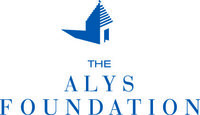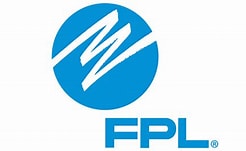History in 3D!: Sculpting Social Studies Adventure

- School:
- Seaside School
- Subject:
- STEM Education
- Teacher:
- Jessica Mitchell
- Students Impacted:
- 100
- Grade:
- 6-8
- Date:
- September 10, 2025
Investor
Thank you to the following investor for funding this grant.
The Alys Foundation - $500.00
Goal
The primary goal is to enhance student engagement and understanding of world history and cultures by enabling students to design and create physical models of ancient artifacts and historical monuments using 3D printing technology. This experiential approach will empower students to interact with replicas of actual relics—such as Egyptian pyramids, Roman coins, or Native American tools—deepening their appreciation for diverse civilizations and promoting active, inquiry-driven learning. By bringing these objects into the classroom, students will gain tangible connections to the past, transforming history lessons into meaningful, memorable experiences that foster critical thinking and curiosity about the study of ancient history.
This technology-driven initiative aligns with educational standards that advocate creative problem solving, collaboration, and digital literacy—preparing students for the future of a digital age.
Category
Electronics - Personal computers/tablets/iPads, headphones, charging cables, computer mice, etc.
What will be done with my students
Artifact Replicas
Students research ancient civilizations (e.g., Egypt, Greece, Rome) and select an artifact to model, such as coins, tools, pottery, or jewelry. They create or download 3D models, print replicas, and present findings on the historical and cultural significance of each object. This project deepens understanding and allows tactile exploration, connecting abstract history to real-world objects.
Monuments & Landmarks
Classes work in teams to design and print scale models of famous monuments, such as the Pyramids of Giza, Colosseum, Great Wall of China, or Chichén Itzá. Each group researches the monument’s history, architecture, and social impact, then creates a museum-style display.
Classroom “Mini Museum” Exhibit - I'm most excited about this idea!
Students collectively curate a classroom exhibit, printing a variety of artifacts and monuments from different times and regions. Roles can include curators, designers, historians, and docents, fostering collaboration and responsibility. The exhibit encourages critical thinking as students discuss artifact authenticity, era context, and relevance.
Benefits to my students
One of the most challenging aspects of trying to bring "history alive" in the classroom when you study ancient world history or even American history, is the limitations around immersing your students in the culture and area you are studying. Getting to see monuments in person, understanding the incredible technological advancements they represent, and overall being able to touch or see things up close instead of in a textbook or on a computer screen can be transformative. The ability to create 3d models of artifacts, locations, and monuments will bring a level of excitement and understanding to the social studies classroom that will enhance and deepen the understanding of content and hopefully inspire a love of learning in our students!
Budget Narrative
The budget items listed include the 3d printer itself, and three packs of the filament used to create 3D monuments, civilizations, etc.
Items
| # | Item | Cost |
|---|---|---|
| 1 | Flashforge 3D printer - Amazon | $379.00 |
| 2 | Overture PLA Filament - black | $14.99 |
| 3 | Overture PLA Filament - gold | $14.99 |
| 4 | Overture PLA Filament - red | $14.99 |
| 5 | Overture PLA Filament - blue | $14.99 |
| 6 | Overture PLA Filament - black | $14.99 |
| 7 | Overture PLA Filament - gold | $14.99 |
| 8 | Overture PLA Filament - white | $14.99 |
| 9 | Overture PLA Filament - brown | $14.99 |
| 10 | Shipping | $1.08 |
| Total: | $500.00 |






Share
Please share this page to help in fulfilling this grant.
Email to a Friend